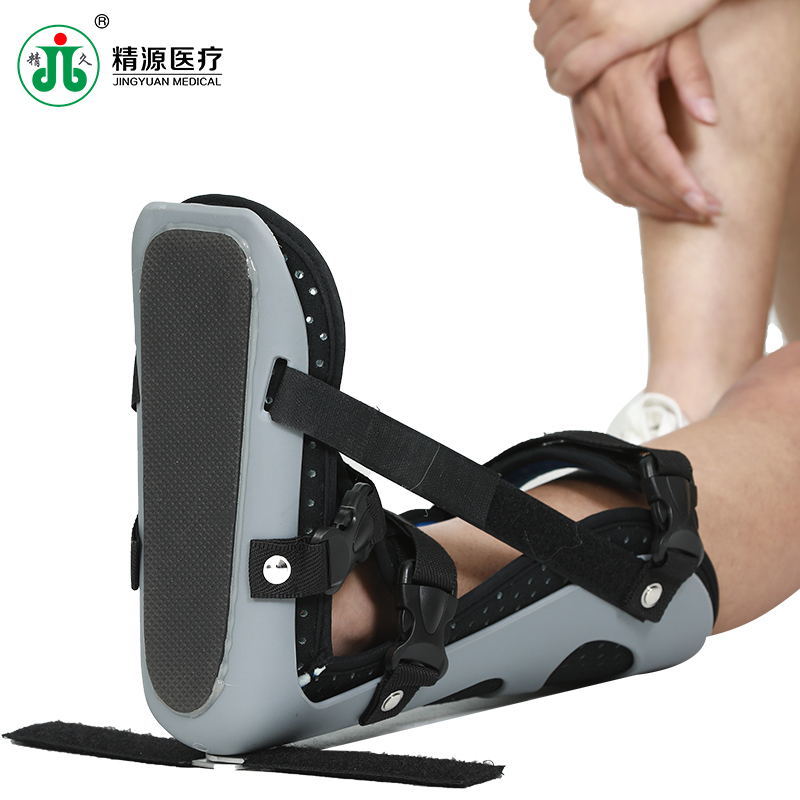How to choose an ankle brace
Release time:
May 31,2022
Ankle brace is placed outside the body to limit certain movements of the body, assist the effect of surgical treatment, or directly used for external fixation of non-surgical treatment. At the same time, on the basis of external fixation, the pressure point can be used as an orthopedic bracket to correct and treat physical deformities. Then, let's learn how to choose the lower ankle brace together!
Ankle braceIt refers to being placed outside the body to limit certain movements of the body and assist the effect of surgical treatment, or being directly used for external fixation of non-surgical treatment. At the same time, the pressure point on the basis of external fixation can become an orthopedic bracket for correcting and treating physical deformities. Then, let's learn how to choose the lower ankle brace together!
Function of ankle brace
1. Stabilize joints
For example, poliomyelitis sequelae leads to paralysis of the knee, paralysis of muscles that control extension and flexion of the knee joint, soft and unstable knee joint, excessive extension, and obstruction of standing position. The knee joint can be controlled in the normal extension position through support, and load can be used. In addition, like patients with lower limb paralysis, the knee joint is unstable in the straight position when practicing standing, and it is easy to bend forward and kneel. Using ankle brace can prevent the knee joint, if the ankle muscles are completely paralyzed, the ankle will become soft and become a flail, with a support installed on the shoe, which can stabilize the ankle and facilitate standing and walking.
2. Replace weight-bearing to protect bone grafts and fractures

For example, after free bone grafting of most bone defects in the femoral shaft or tibial shaft, lower limb braces can be used to protect the bone graft to ensure the integrity and survival of the bone graft and prevent bone graft fractures before weight bearing. The ankle brace has a grounding load, and gravity is transmitted to the ischial tuberosity through the brace, reducing the femoral and tibial loads. Support and protection may be provided until a fracture has not fully healed, such as an ankle injury.
3, correction of deformity or prevent the deterioration of deformity
For patients with mild scoliosis below 40, a support vest can be used to correct scoliosis and prevent it from aggravating. For mild hip dislocation or hemi-dislocation, a hip abduction brace can be used to reposition the dislocation. With regard to foot sagging, it is possible to prevent foot sagging and the like by using a bracket connected to the shoe. It is also one of the braces to add insoles to relieve the headache and flat foot.
4. Alternative functions
For example, when the leg muscles are paralyzed and cannot be held, the wrist joint can be supported in a functional position with a support to stimulate the flexor muscles to contract and restore the holding function.
5. Supplementary length
For example, when a patient with a shorter lower limb stands and walks, the pelvis is bound to tilt. The tilt of the pelvis may cause compensatory bending of the lumbar spine and feel lumbago. In order to make up for the length of the short limb, raising the sole can make up for stilts.
6. Temporary external fixation
With the popularity of rehabilitation medicine, low temperature, high temperature thermoplastic plate and resin materials emerge in endlessly, a variety of applications of biomechanical design theory of brace emerge in endlessly, with its simple operation, strong plasticity and other advantages, can be widely used in clinical rather than plaster, ankle brace is widely used.
The above introduction isAnkle braceHow to choose, if you need to know more, you can contact us at any time!
Key words:



